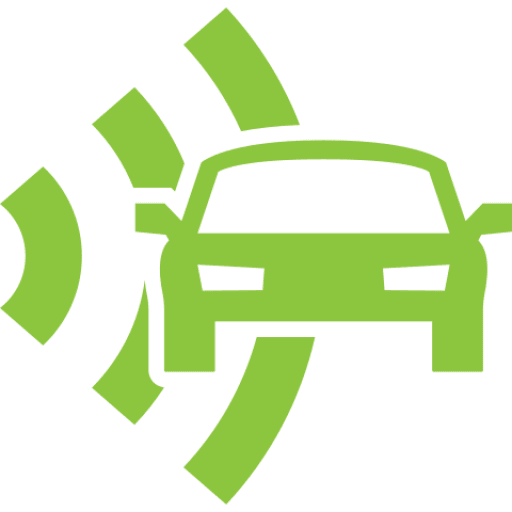How Connected and Autonomous Vehicles are Driving Innovation
11/07/2019
and autonomous vehicles are getting closer to being road-ready and manufacturers need to anticipate the shift. OEMs are doing a great job of phasing-in connected and autonomous vehicle technologies; this has made it easier for consumers and automotive suppliers to keep up. The implementation of new C/AV technologies in each model year is likely to continue until fully autonomous vehicles are deployed, and even then, each new model year will likely improve upon connected and autonomous vehicle technologies until they’re perfected.
C/AVs may be a primary focus for technology developers, but the timing of mass market acceptance and application of autonomous vehicles remains uncertain.
The slow process of transitioning consumer and fleet vehicles to full autonomy has many technological implications. Full autonomy will require advanced cameras and sensors, lidars and radars, mapping and GPS, machine learning, and smart infrastructure. Automotive manufacturers and a wide range of technology developers are working to make these vehicle systems better and more reliable, which is constantly “driving innovation” and leveraging more investment in hopes of future commercialization.
 Types of Connected and Autonomous Vehicles
Types of Connected and Autonomous Vehicles
The types of connected and autonomous vehicles offered to consumers is mostly dependent on technology readiness and government regulation. Since the early 2000s, most drivers have slowly adopted advanced driver awareness systems.
In the coming years, consumers will have to adopt technological advancements at an even greater speed to incorporate varying levels of automation. Automotive companies will likely offer a range of options during this transition, including a mix of:
- Driver-Assisted Vehicles: Driver-assisted vehicles have saturated the automotive market in recent years as technologies originally introduced in luxury automotive brands have become more feasible for standard passenger vehicles. This class of automation introduces features such as blind spot detection, driver monitoring, intelligent speed adaptation (adaptive cruise control), automatic parking, and lane keep assist.
- Partially Autonomous Vehicles: Current advancements in autonomous vehicles contribute to this category and will help drivers automate many common driving functions. Some driving situations will be automated through features like single-lane highway piloting, autonomous valet parking, traffic jam autopiloting, and highway/urban autopiloting.
- Conditionally Autonomous Vehicles: In the next anticipated wave of connected and autonomous vehicles, vehicles may (depending on regulatory and infrastructure requirements) drive themselves in most situations, free of any human interaction. Vehicles will react intuitively in most situations and will be used in more applications, including deployment of robotaxis, automated shuttles, and truck platooning.
- Fully Autonomous Vehicles: Ultimately, connected and autonomous vehicles will reach a point where most new vehicle sales incorporate full autonomy. At this point, C/AVs will be usable worldwide and applied to all types of vehicles including commercial trucks.
 Key Technologies Required for C/AV Market Growth
Key Technologies Required for C/AV Market Growth
Connected and autonomous vehicles will require continued development and testing of many key technologies before widespread adoption is possible. Not only do these components need to be durable and reliable, but they must also communicate with other systems instantaneously.
Automotive technology developers can tap into C/AV research opportunities by examining where potential exists for the following systems:
- Cameras and Sensors: Ensuring that connected and autonomous vehicles can identify and avoid potential collisions is an essential function that all C/AVs will require. Cameras and sensors are the current and most well-established solution to this issue and have become increasingly standard on current vehicles through back-up cameras/sensors and other equipment to monitor vehicle surroundings.
- Lidars and Radars: Like cameras and sensors, lidars and radars will operate with the main function of keeping drivers, passengers, and pedestrians safe. Radars are already working in vehicles to support ADAS applications like adaptive cruise control, but lidars are typically identified as the best option when it comes to autonomous vehicles. Lidars use spinning sensors that emit and gather data from infrared lasers that build a picture of vehicle surroundings; this is more versatile than cameras or sensors.
- Mapping and GPS: Autonomous vehicles rely on global positioning systems (GPS) to identify location and map out a route that takes passengers to a destination. While GPS technologies are already commonplace, autonomous vehicles will need to integrate GPS with onboard imaging/processing equipment to ensure vehicles always have a sense of direction, even if there are temporary disruptions to the GPS signal. GPS and lidar/radar/camera systems need to work together to build and maintain an understanding of vehicle surroundings at all times.
- Software and Machine Learning: Improving vehicle security features and the autonomous driving experience are two critical factors that will determine how quickly C/AVs take over. Consumers are still cautious to transition to them because of the perceived threat of hackers taking control of vehicles, stealing driving or personal information, or otherwise infringing on privacy. Technology developers can help overcome this by making systems more secure while also empowering vehicle software to become more advanced without manual software updates.
- Smart Infrastructure: Establishing a link between autonomous vehicles and surroundings will require significant innovation in vehicle-to-vehicle and vehicle-to-infrastructure communication. Smart infrastructure can most easily be integrated into traffic-control equipment like traffic lights, railway crossings, medians/barriers, and roadways, but requires proven long-term solutions that receive buy-in from municipalities, provinces, or countries who own and maintain the technology.
Discover Connected and Autonomous Vehicle R&D Opportunities
Does your Canadian manufacturing or technology-oriented business plan to invest in connected and autonomous vehicle technologies? If so, you’re not alone. Innovative businesses leading the way in automotive innovation can access a wide range of educational and financial resources to accelerate growth.
These investment and project-specific resources can be accessed by downloading our Electric and Autonomous Vehicle Trends white paper.
Subscribe to Funding Updates
Get the top Canadian government funding news, delivered weekly to your inbox. You can unsubscribe at any time.
 Types of Connected and Autonomous Vehicles
Types of Connected and Autonomous Vehicles Key Technologies Required for C/AV Market Growth
Key Technologies Required for C/AV Market Growth
